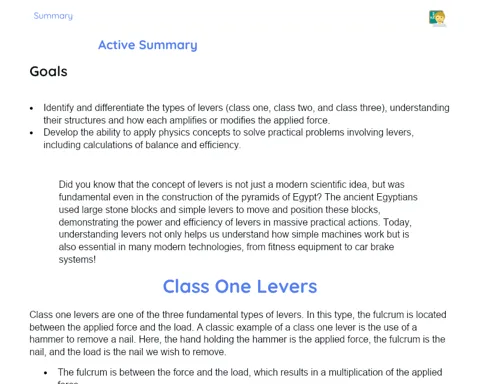Mastering Relative Velocity: Theory and Practice
Objectives
1. Understand the concept of relative velocity.
2. Calculate the relative velocity between two objects.
3. Apply concepts of relative velocity in real-life situations.
4. Develop problem-solving skills in Physics.
Contextualization
Imagine you are driving a car at 60 km/h on a road. Suddenly, another car passes you at 80 km/h. The difference between the speeds of the cars is a practical example of relative velocity. This concept is crucial for understanding how objects move in relation to each other, whether on a highway or in a football field. In the job market, relative velocity is used in various areas, such as automotive engineering to calculate the safety of cars in collisions, in aviation to determine efficient flight paths, and even in the film industry to create realistic action scenes.
Relevance of the Theme
Understanding relative velocity is not only a theoretical exercise but a practical skill that has direct application in various industries and everyday contexts. In today's technological and industrial landscape, understanding how to calculate and apply relative velocity can lead to the development of innovative and safe solutions, improving efficiency and safety in transportation, aviation, and many other areas.
Relative Velocity
Relative velocity is the measure of the velocity of one object in relation to another. This concept is fundamental for understanding how different objects move in relation to each other from a given reference frame. It can be calculated by subtracting the velocities of the objects if they are moving in the same direction or adding them if they are moving in opposite directions.
-
Relative velocity is the difference between the speeds of two objects moving in relation to each other.
-
Important for analyzing movements from different reference frames.
-
Can be calculated using the formula V_rel = V_object1 - V_object2 if they are in the same direction.
Calculating Relative Velocity
To calculate relative velocity, it is necessary to know the speeds of the two objects in question. If the objects are moving in the same direction, the relative velocity is the difference between their speeds. If they are moving in opposite directions, the relative velocity is the sum of their speeds.
-
Identify the speeds of the two objects.
-
Determine whether the objects are moving in the same direction or in opposite directions.
-
Apply the appropriate formula: subtract the speeds for the same direction and add for opposite directions.
Applications of Relative Velocity
Relative velocity has various practical applications, being crucial in areas such as automotive engineering, where it is used to calculate the safety of vehicles in collisions, in aviation to determine efficient flight paths, and in the film industry to create realistic action scenes.
-
Automotive engineering: safety calculation in collisions.
-
Aviation: determination of efficient flight routes.
-
Film industry: creating realistic action scenes.
Practical Applications
- Automotive engineering: Relative velocity is used to calculate the safety of cars in collisions, aiding in the design of safety systems such as airbags and crumple zones.
- Aviation: Pilots and air traffic controllers use relative velocity to plan routes and avoid collisions, improving the efficiency and safety of flights.
- Film industry: Relative velocity is used to create more realistic chase and action scenes by adjusting the speeds of vehicles in relation to each other.
Key Terms
-
Relative Velocity: The difference in speed between two objects in motion relative to each other.
-
Reference Frame: The point of view from which the movement of objects is observed.
-
Kinematics: The branch of physics that studies the motions of bodies without considering their causes.
Questions
-
How can understanding relative velocity influence road safety and reduce the number of traffic accidents?
-
In what way is relative velocity crucial for planning air routes and preventing collisions in airspace?
-
In what other industries besides those mentioned can relative velocity be a critical factor for efficiency and safety?
Conclusion
To Reflect
Understanding the concept of relative velocity is fundamental for various applications both in academia and in the job market. The ability to calculate the speed of one object in relation to another allows for more accurate analysis of movements, essential in fields such as automotive engineering, aviation, and many others. By understanding and applying this concept, you are better prepared to solve practical problems and develop innovative solutions that can directly impact safety and efficiency in various industries.
Mini Challenge - Practical Challenge: Toy Car Race
This mini-challenge aims to consolidate understanding of how to calculate relative velocity through a practical and fun activity.
- Divide into groups of 3 to 4 members.
- Each group must choose two toy cars.
- Mark a distance of 5 meters on the ground using adhesive tape.
- Push the two cars at the same time in the same direction, but with different speeds.
- Use a stopwatch to measure the time each car takes to cover the marked distance.
- Record the times and calculate the speed of each car (V = D/T).
- Calculate the relative velocity between the two cars.
- Discuss the results obtained with your group.



